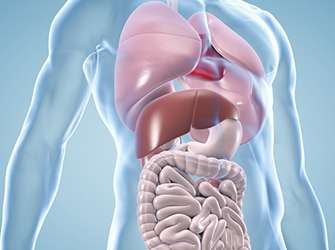Biomarker for fatty liver disease

40 percent of people in the EU suffer from non-alcoholic steatohepatitis (fatty liver disease), a disease which is becoming increasingly more frequent as a result of diabetes and excess weight in an affluent society. Currently, it is not possible to forecast the further course of the disease – right up to cirrhosis and cancer of the liver. Furthermore, an increased risk of heart attack and kidney damage exists. In future, this should become possible using a Risk Score with different biomarkers.
This Risk Score is being developed and validated at the Clinical Department for Gastroenterology and Hepatology at the MedUni Wien in cooperation with the University Clinics for Surgery and Radiology / Nuclear Medicine and partners from the industry. The project is also integrated into the new Austrian centre of competence "CBmed", which the MedUni Wien is involved in to 20 percent.
The objective is to find biomarkers for clinical use in order to facilitate a non-invasive evaluation of the risk, i.e. without a liver biopsy. The initial results are extremely promising, according to Michael Trauner, Head of the Department for Gastroenterology and Hepatology (University Clinic for Internal Medicine III): "We can assume that, in the end, there will be a mixture of biomarkers from which a Risk Score can be compiled." This mix will include markers from blood, from the microbiome in the intestine and genetic markers, and markers from imaging processes including the latest applications of Positron-Emission-Tomography (PET).
"As a result, we will be able to estimate the course of the disease better in future, and therefore will be better able to answer the question of 'how will it develop' than before, if a liver steatohepatitis already exists", says Trauner. At the same time, within the scope of personalised medicine, it is then also easier to take the correct therapeutic steps in due time.
Around 40 percent of the population are already affected by non-alcoholic steatohepatitis, which can lead to hepatitis (fatty liver hepatitis) and cirrhosis and cancer of the liver.
The disease is strongly connected with diabetes, excess weight or a metabolic syndrome, but also with genetic processes and changes to the intestinal microbiome. Incidentally, the term "non-alcoholic fatty liver disease" was coined by the Viennese hepatologist Heribert Thaler (a pupil of Hans Popper) in the 1960s and later picked up by American researchers.















